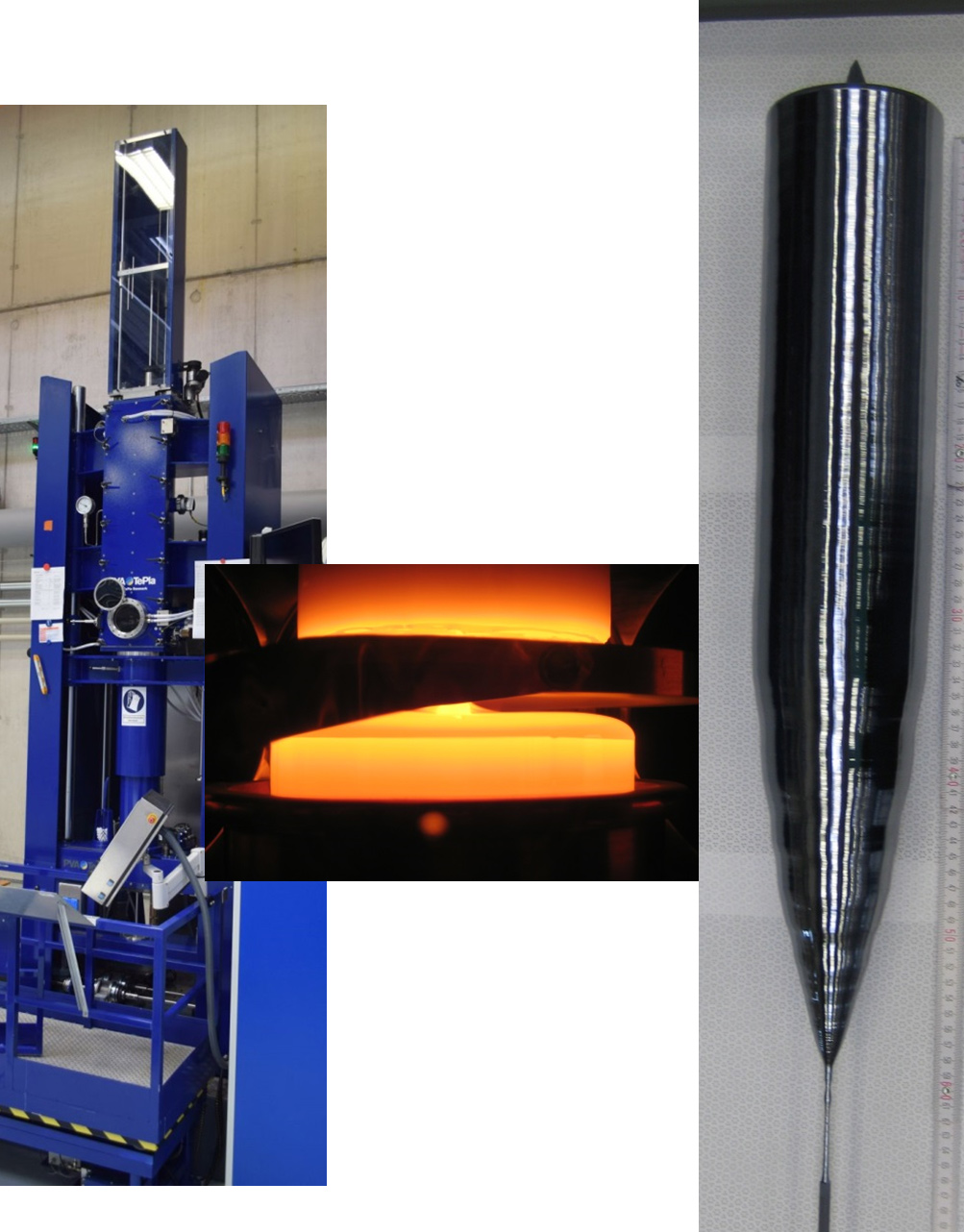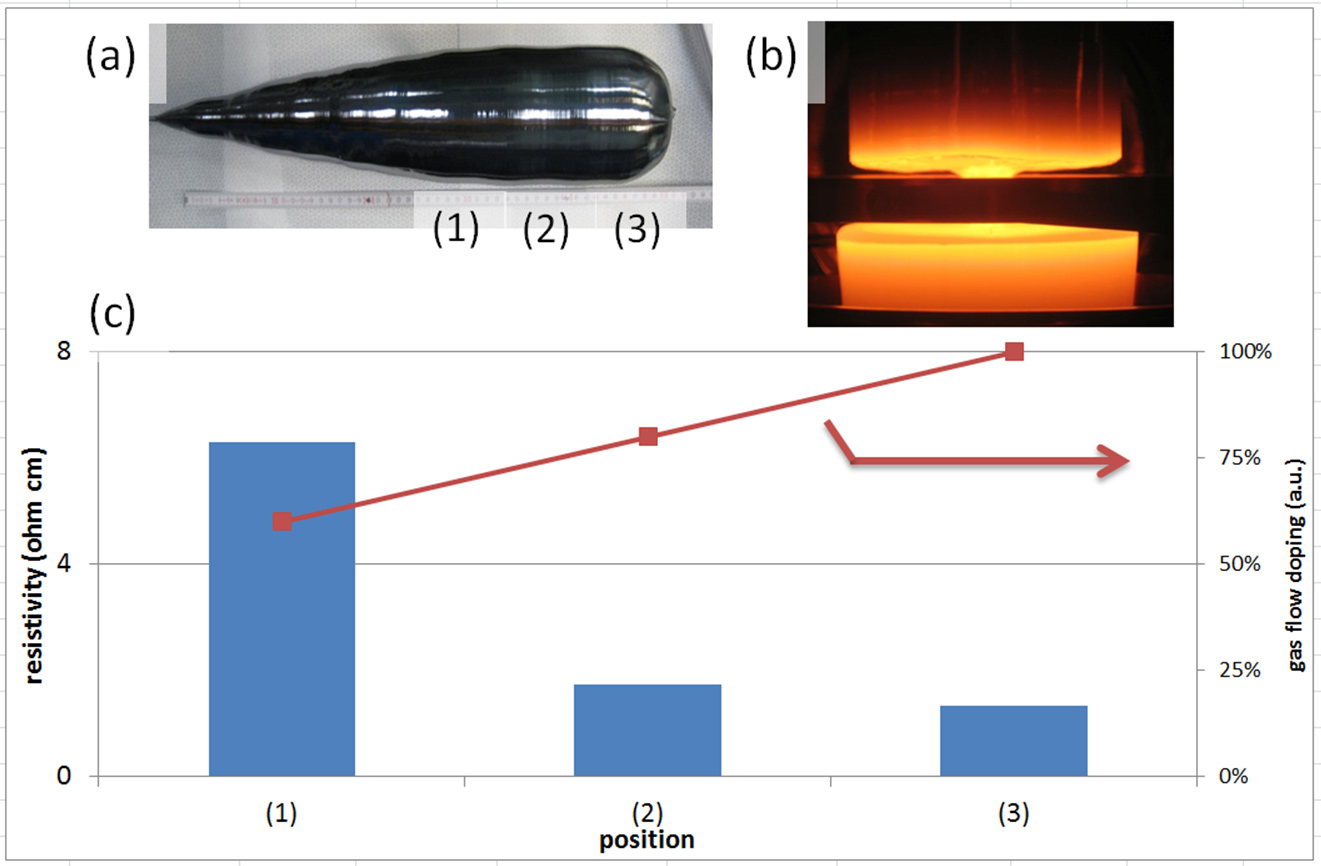| Duration: | April 2015 - April 2018 |
| Contracting Authority/ Sponsors: | German Federal Ministry of Economic Affairs and Energy (BMWi) |
| Project Partners: | RCT Solutions GmbH, PV Crystalox Solar Silicon GmbH, PVA TePla AG, ISC Konstanz e.V. |
| Project Focus: |
KosmoS – Cost-Optimized High-Efficiency Solar Cells of Low-Oxygen N-Type Monocrystalline Silicon for Industrial Mass Production


Float zone silicon is the predestined material for high-efficiency solar cells due to a low oxygen concentration, which is two orders of magnitude lower than in Czochralski wafers. Further, we achieve a significantly lower concentration of impurities and a very uniform electrical resistivity. In combination with the n-type back-side emitter cell concept, excellent efficiency potentials can be achieved that exceed conventional Czochralski material. The greatest challenges are crystallization of Float zone rods with diameters > 200 mm as well as the provision of cost-effective feed rods, suitable for FZ growth. These two topics are investigated by Fraunhofer CSP within the scope of the “KosmoS«”research project.
The production process for float zone suitable feed rods, developed at Fraunhofer CSP, the so-called “pre-pulling process”, enables the use of cost-efficient solar silicon for the production of float zone crystals. This includes a huge cost savings potential for the float zone technology. Using our pp-FZ (pre-pulling Float Zone) process, feed rods with different diameters can be produced, adjusted to the diameter of the float zone ingots to be crystallized. These feed rods do not require any additional mechanical or chemical processing steps, but can be used directly for the float zone process. So far, the increase in crystal diameter and the implementation of gas phase doping must be mentioned as key milestones of the project. For the first time, float zone crystals were produced based on pre-pulled feed rods with a diameter of 6”. In the further course of the project, this will be extended to 7” and 8”. With commissioning of the gas phase doping system, we are able to adjust specific resistance profiles in the crystal and to generate a uniform axial doping profile even for segregation coefficients <<1. For this purpose, diluted phosphine or diborane is blown onto the liquid melt zone and is absorbed by the silicon melt. The doping system was successfully tested for p- and n-type crystals.